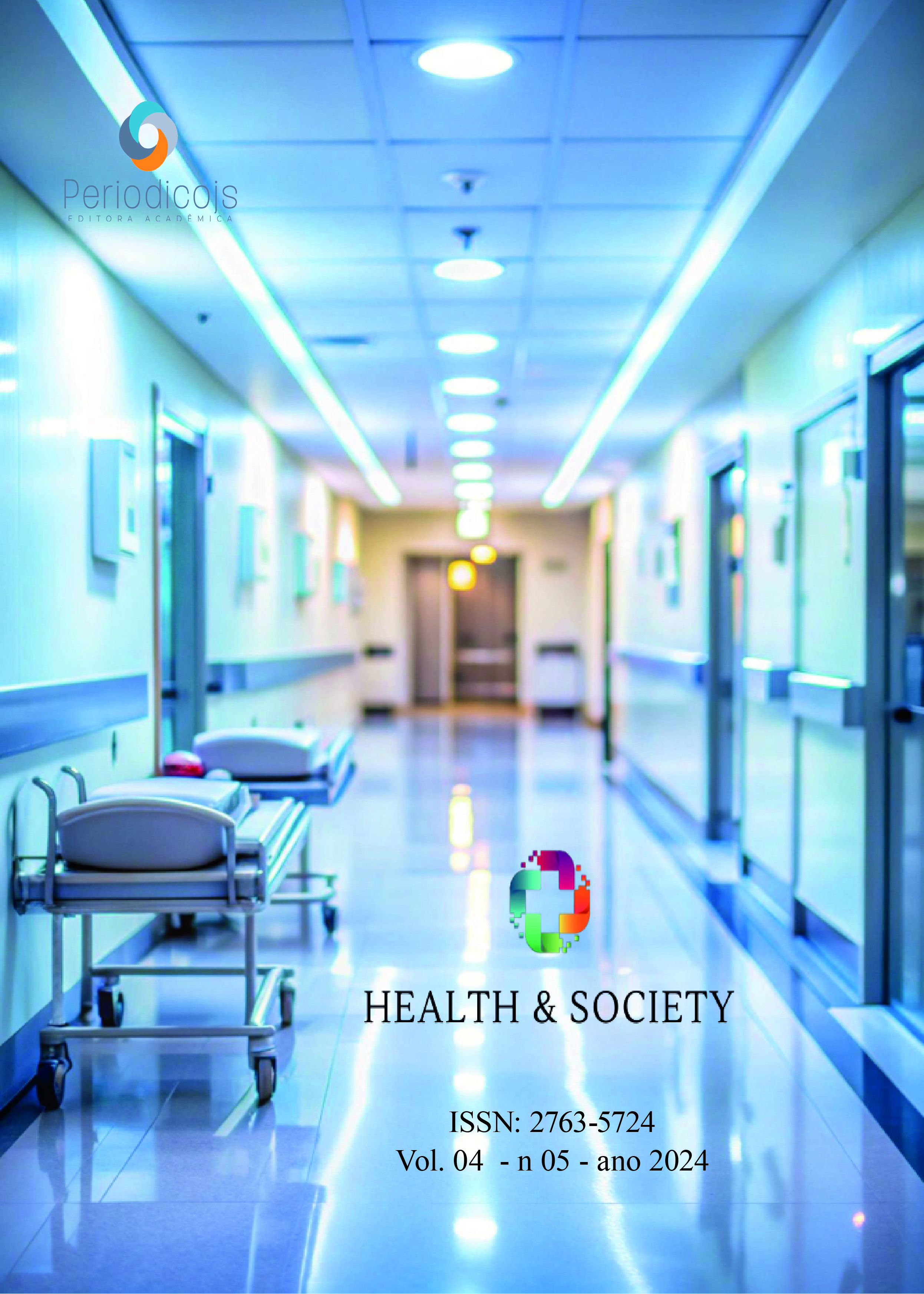Resumo
Introduction: American Tegumentary Leishmaniasis is an infectious, non-contagious disease, with compulsory notification and severe evolution, caused by protozoa of the genus Leishmania. The medications used for treatment are multidisciplinary approach strategies. Objective: To survey the epidemiological profile of a decade, 2009 to 2019, specifically in the Federal District, with the participation of a multidisciplinary approach in treatment. Methods: The procedures involved stages of preparing maps and graphs using the Power Bi program, to identify numbers of confirmed cases, with data by administrative regions of the Federal District, with treatment analysis. The epidemiological survey was carried out using data from SINAN and the Epidemiological Information on Leishmaniasis of the Federal District. Results: It was evident that the treatment is carried out at the reference center, Hospital Universitário de Brasília. Epidemiological information by Health Superintendencies, with constant case records, however in 2019 there was a significant decrease. Conclusion: It is pointed out that confirmed cases during the decade fluctuated and were recurrent. Participation in treatment, within the scope of the multidisciplinary approach, is necessary and requires, in addition to dispensing, monitoring the use of the medication by the patient, it is important to guarantee safety and effectiveness, guaranteeing health quality, avoiding errors related to medication.
Referências
Brazil. (2017). Manual for the surveillance of tegumentary leishmaniasis [electronic resource] / Ministry of Health, Secretariat of Health Surveillance, Department of Surveillance of Communicable Diseases. – Brasília: Ministry of Health 18-89.
Brazil. Ministry of Health. Health Surveillance Secretariat. Department of Communicable Disease Surveillance. Manual for the surveillance of cutaneous leishmaniasis [electronic resource] / Ministry of Health, Secretariat of Health Surveillance, Department of Surveillance of Communicable Diseases. – Brasília : Ministry of Health, 2017. 189 p. : il.
Brazil. (2019). Cutaneous Leishmaniasis (TL): What it is, causes, symptoms, treatment, diagnosis, and prevention. Health Surveillance Secretariat / Communicable Disease Surveillance Department. Brasília: Ministry of health. Available at: <http://portalms.saude.gov.br/saude-de-a-z/leishmaniose-tegumentar>.
Brazil. (2002). Surveillance and Monitoring of American Cutaneous Leishmaniasis in Territorial Units, National Health Foundation, 2. ed. –Brasília: Ministry of Health, 1994-2001.
Brazil. (2009). Health surveillance: zoonoses / Ministry of Health, Secretariat of Health Care, Department of Primary Care. – Brasília: Ministry of Health.
Brazil. (2010). Manual of Surveillance of American Cutaneous Leishmaniasis / Ministry of Health, Secretariat of Health Surveillance. – 2. current ed. – Brasília: Ministry of Health Press.
Brazil. (2011). Ministry of Health. Health Surveillance Secretariat. Department of Epidemiological Surveillance. Manual of recommendations for diagnosis, treatment and follow-up of patients with Leishmania-HIV co-infection / Ministry of Health, Secretariat of Health Surveillance, Department of Epidemiological Surveillance – Brasília: Ministry of Health.
Brazil. (2015). Pharmaceutical care in primary care / Ministry of Health, Secretariat of Science, Technology and Strategic Inputs. Department of Pharmaceutical Services and Strategic Inputs. – 1. ed. rev. – Brasília: Ministry of Health.
Brazil. (2016). Manual of surveillance, prevention and control of zoonoses: technical and operational standards / Ministry of Health, Secretariat of Health Surveillance, Department of Surveillance of Communicable Diseases. – Brasília: Ministry of Health.
BRAZIL. (2018). Ministry of Health. Health Surveillance Secretariat Department of Communicable Disease Surveillance. General Coordination of Communicable Diseases – Brasília: Ministry of Health.
BRAZIL. (2019). Ministry of Health (BR). Health Surveillance Secretariat. Health surveillance in Brazil 2003|2019: from the creation of the Health Surveillance Secretariat to the present day. Bol Epidemiol [Internet]. 2019 Sep [date of citation]; 50(n.esp.) :1-154. Available at: http://www.saude.gov.br/ epidemiological bulletins pages 41 and 42
Brazil. (2020). Strategic Component of Pharmaceutical Services / Ministry of Health, Health Secretariat of the Federal District. –Current. – Brasília: Ministry of Health.
Brazil. Manual for surveillance of tegumentary leishmaniasis. 2017, Brasília – DF, 1st ed., p. 1-191
National Health Council. Resolution No. 338, of May 6, 2004. Available at: http://portal.saude.gov.br/portal/arquivos/pdf/resol_cns338.pdf. Accessed on: 28 set. 2020.
OSWALDO CRUZ FOUNDATION. www.fiocruzbrasilia.fiocruz.br/leishmaniose-e-tema-de-encontro-de-pesquisadores/ Rio de Janeiro: FIOCRUZ/Presidency, available on: 30 Sep 2020.
IVAMA, A. M. et al. (2002). Pharmaceutical care in Brazil: treading paths. Brasilia: PAHO, Technical Report 2001-2002.
MINISTRY OF HEALTH (2019). Infectious and parasitic diseases: Epidemiological Newsletter. Health Surveillance Secretariat. Brasília: Department of Epidemiological Surveillance.
PAN AMERICAN HEALTH ORGANIZATION (PAHO/WHO). https://www.paho.org/pt/topicos/leishmaniose/leishmaniose-visceral 2024

Este trabalho está licenciado sob uma licença Creative Commons Attribution 4.0 International License.
Copyright (c) 2024 Edis Rodrigues Junior, Abraao Gomes Abreu, Carolyne Almeida Sarmento, Liniker Lima Luz, Thays Roiz Casarin, Letícia Cristina Barbosa Serejo, Lindsay Sandy Barbosa de Lima, Aianne Lannara Freire e Silva, Thaís Ferreira Dantas da Silva, Lucas Boni Inácio, Ricardo Rangel de Freitas Rodrigues, Suely Gomes de Jesus, Thamyres Kryssia Bastos Teles, Glenya Gilkla da Silva Abreu, Juliana Oliveira de Toledo





